
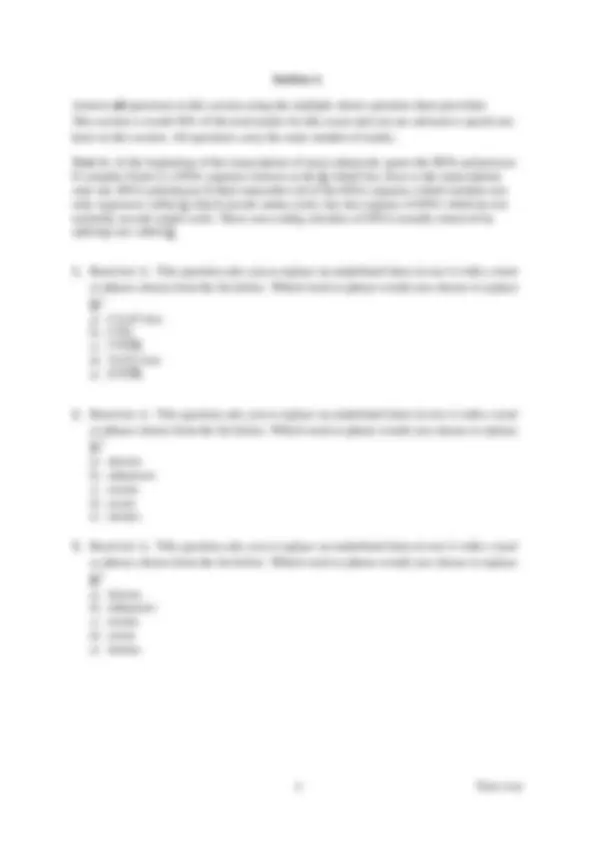
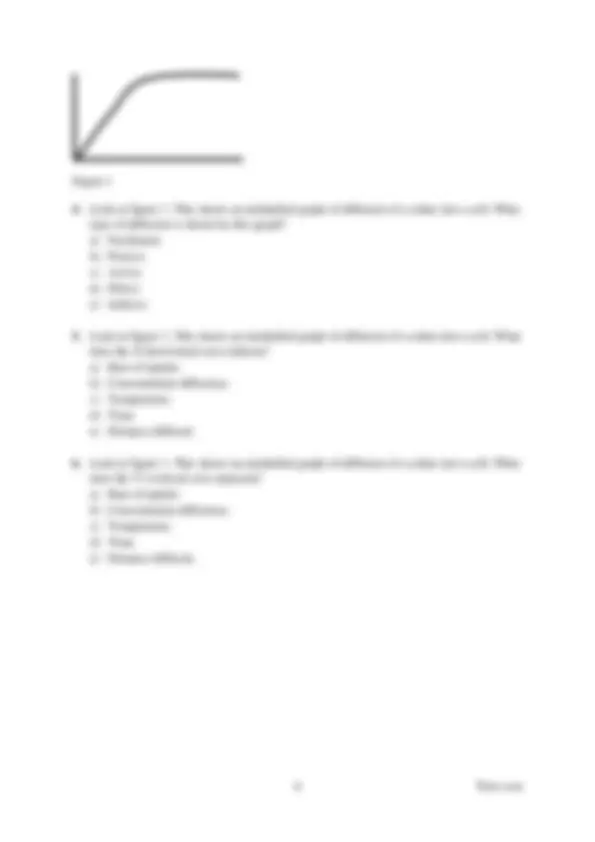
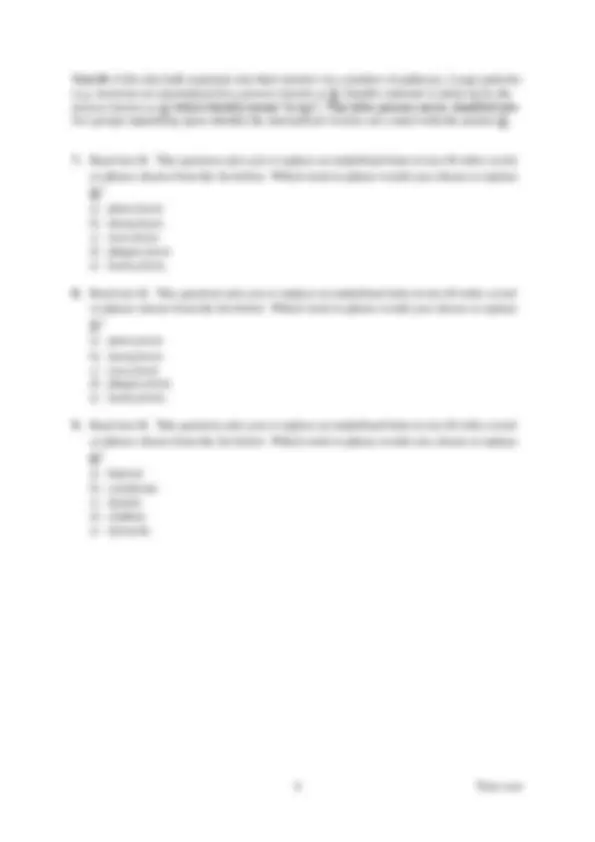
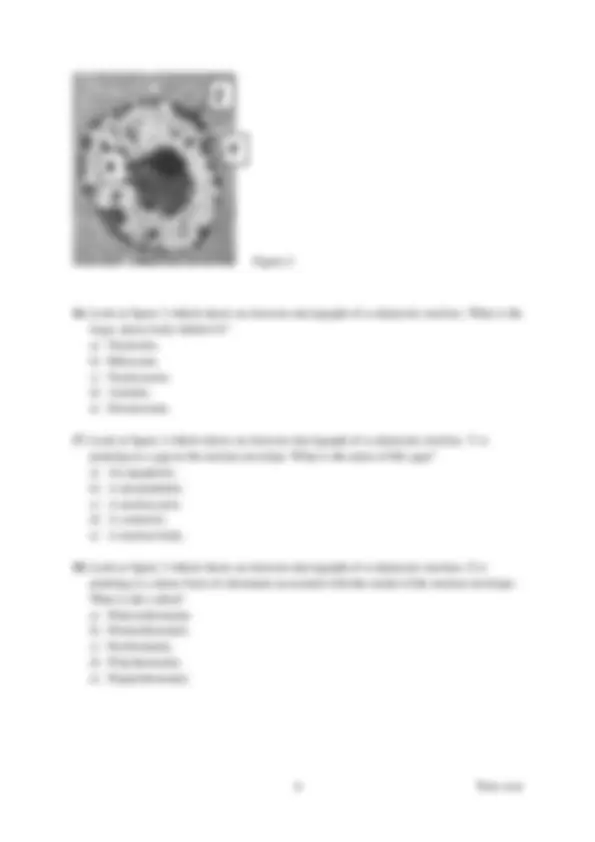

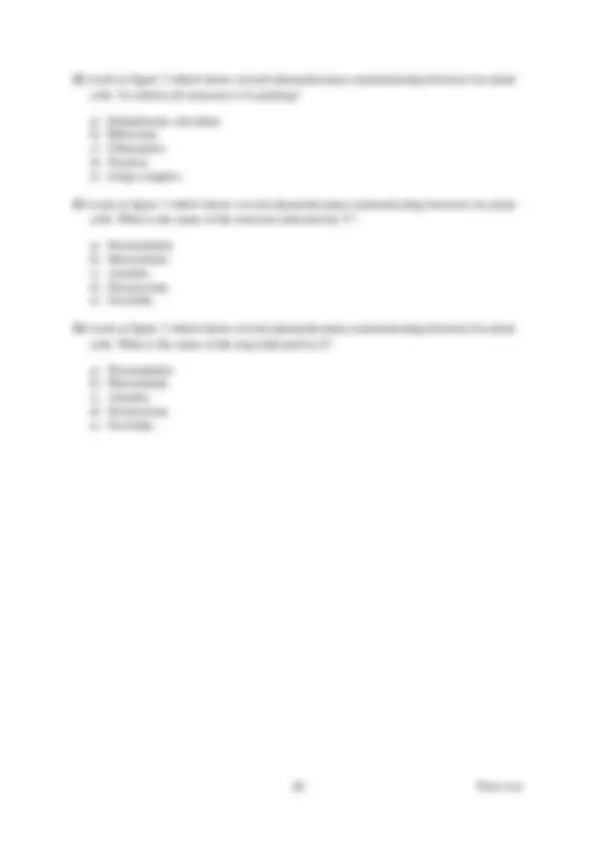
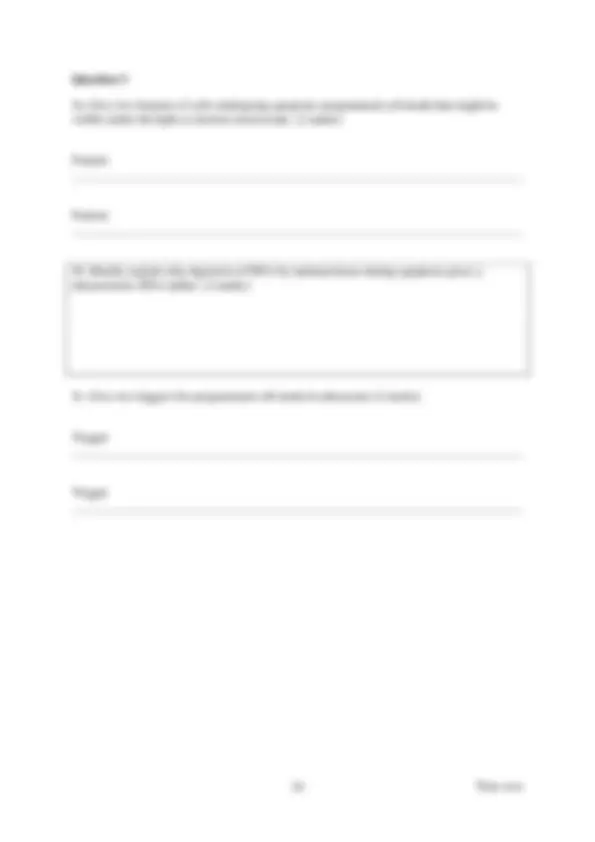
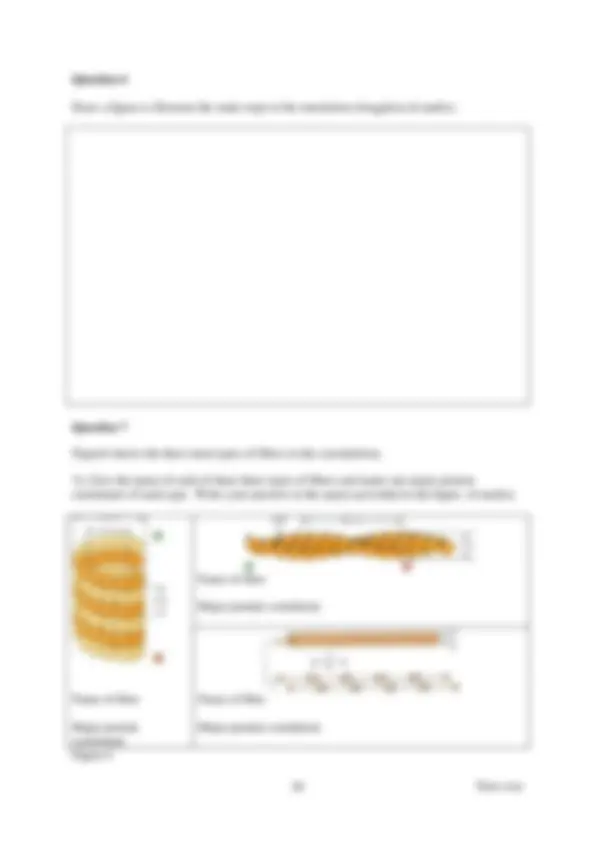



Study with the several resources on Docsity

Earn points by helping other students or get them with a premium plan


Prepare for your exams
Study with the several resources on Docsity

Earn points to download
Earn points by helping other students or get them with a premium plan
Community
Ask the community for help and clear up your study doubts
Discover the best universities in your country according to Docsity users
Free resources
Download our free guides on studying techniques, anxiety management strategies, and thesis advice from Docsity tutors
A portion of a biology exam question paper. It includes instructions for the students, multiple choice questions for section a, and questions for students to answer in their own words for section b. The exam covers topics such as transcription, cellular uptake of materials, organelle isolation, plasma membrane fluidity, and glycosylation.
Typology: Exams
1 / 15

This page cannot be seen from the preview
Don't miss anything!










Time allowed — 2 hours
1 Enter your name in the space provided at the top right of this page. If you wish to conceal your identity while the answers are being assessed, fold over and seal down the top right-hand corner as shown (adhesive strips are provided).
2 Your reference/identification number should be written in the space provided at the bottom of the page.
3 Answer all questions in section A using the multiple choice answer sheet provided.
4 Section A is worth 50% of the total marks for this exam and you are advised to spend one hour on this section. All questions carry the same number of marks.
5 Answer five questions using section B in the spaces provided in this question paper
This question paper thus becomes the answer book for Section B and it must be handed in complete. Make sure your name is on it and, in the case of anonymous marking, your reference/identification number.
Surname……………………….
Forenames……………………………………………… …………………………………………………………………. .
Turn over
Answer all multiple-choice-questions on one optically marked sheet. You must answer each question in the order in which it appears on the question paper.
Complete the boxes on this form to give the following details – name, date, subject, module identifier and student number.
Student number should be completed by writing the digits in pencil in the top line of the box and then filling in the bar code boxes below with the first digit represented in column 1 , the second digit in column 2 and so on. This is done by striking through the little box with the soft pencil as shown in the instructions on the sheet for marking the correct answers. Other instructions are on the form, but note the following:-
There are five possible answers to each question, only one of them is correct.
Record your answers on the optically read form by using a soft pencil (HB or softer) to mark the appropriate box thus: ████
Do not tick, cross or ring the boxes and do not write elsewhere on the form.
5 marks are given for every correct answer
1 mark is deducted for every incorrect answer
No marks are added/deducted for blank answers
If you make a mistake on the optically read answer form, it can be corrected with a soft eraser.
Spare forms are available in the examination hall
Figure 1
4. Look at figure 1. This shows an unlabelled graph of diffusion of a solute into a cell. What type of diffusion is shown by this graph? a) Facilitated. b) Passive. c) Active. d) Direct. e) Indirect. 5. Look at figure 1. This shows an unlabelled graph of diffusion of a solute into a cell. What does the X (horizontal) axis indicate? a) Rate of uptake. b) Concentration difference. c) Temperature. d) Time. e) Distance diffused. 6. Look at figure 1. This shows an unlabelled graph of diffusion of a solute into a cell. What does the Y (vertical) axis represent? a) Rate of uptake. b) Concentration difference. c) Temperature. d) Time. e) Distance diffused.
Text B: Cells take bulk materials into their interior via a number of pathways. Large particles (e.g. bacteria) are internalized by a process known as X. Smaller material is taken up by the process known as Y (which literally means ‘to sip’). This latter process can be classified into two groups depending upon whether the internalised vesicles are coated with the protein Z.
7. Read text B. This question asks you to replace an underlined letter in text B with a word or phrase chosen from the list below. Which word or phrase would you choose to replace X? a) pinocytosis b) intracytosis c) exocytosis d) phagocytosis e) transcytosis. 8. Read text B. This question asks you to replace an underlined letter in text B with a word or phrase chosen from the list below. Which word or phrase would you choose to replace Y? a) pinocytosis b) intracytosis c) exocytosis d) phagocytosis e) transcytosis. 9. Read text B. This question asks you to replace an underlined letter in text B with a word or phrase chosen from the list below. Which word or phrase would you choose to replace Z? a) kinesin b) colchicine c) dynein d) clathrin e) dynactin.
Text D: Plasma membrane fluidity is affected by many factors. The number of double bonds in fatty acyl chains is important and plasma membranes containing a high proportion of X tend to be more fluid than those with a high proportion of Y. Z forms bonds between adjacent membrane lipids decreasing fluidity and maintaining the structural integrity of the plasma membrane.
13. Read text D. This question asks you to replace an underlined letter in text D with a word or phrase chosen from the list below. Which word or phrase would you choose to replace X? a) cerebroside b) unsaturated lipid c) saturated lipid d) glycolipids e) cholesterol. 14. Read text D. This question asks you to replace an underlined letter in text D with a word or phrase chosen from the list below. Which word or phrase would you choose to replace Y? a) cerebroside b) unsaturated lipid c) saturated lipid d) glycolipids e) cholesterol. 15. Read text D. This question asks you to replace an underlined letter in text D with a word or phrase chosen from the list below. Which word or phrase would you choose to replace Z? a) cerebroside b) unsaturated lipid c) saturated lipid d) glycolipids e) cholesterol.
Figure 2
16. Look at figure 2 which shows an electron micrograph of a eukaryotic nucleus. What is the large, dense body labeled X? a) Nucleolus. b) Ribosome. c) Nucleosome. d) Annulus. e) Desmosome. 17. Look at figure 2 which shows an electron micrograph of a eukaryotic nucleus. Y is pointing to a gap in the nuclear envelope. What is the name of this gap? a) An aquaporin. b) A desmotubule. c) A nuclear pore. d) A connexin. e) A nuclear body. 18. Look at figure 2 which shows an electron micrograph of a eukaryotic nucleus. Z is pointing to a dense form of chromatin associated with the inside of the nuclear envelope. What is this called? a) Heterochromatin. b) Homochromatin. c) Euchromatin. d) Polychromatin. e) Hyperchromatin.
22. Look at figure 3 which shows several plasmodesmata communicating between two plant cells. To which cell structure is X pointing?
a) Endoplasmic reticulum. b) Ribosome. c) Chloroplast. d) Nucleus. e) Golgi complex.
23. Look at figure 3 which shows several plasmodesmata communicating between two plant cells. What is the name of the structure indicated by Y?
a) Desmotubule. b) Microtubule. c) Annulus. d) Desmosome. e) Occludin.
24. Look at figure 3 which shows several plasmodesmata communicating between two plant cells. What is the name of the ring indicated by Z?
a) Desmotubule. b) Microtubule. c) Annulus. d) Desmosome. e) Occludin.
Section B
Answer five questions in this section using the spaces provided in this question paper. This section is worth 50% of the total marks for this exam and you are advised to spend a total of one hour on this section. Each whole question carries the same number of marks and you are advised to spend between 10 and 12 minutes on each question. Question sub-sections (e.g. 1a, or 5b) show a mark (out of a total of 6) to indicate how much each sub-section contributes to the question as a whole.
Question 1
1a. What are Archaebacteria? (1 mark)
1b. Give two examples of environments in which Archaebacteria might be found on Earth today. (2 marks)
1c. Why was the sequencing in 1996 of the Methanococcus genome important in our understanding of the earliest of Earth’s lifeforms? (3 marks)
Question 2
Draw and label a figure showing the internal structure of a typical chloroplast (6 marks).
Question 5
5a. Give two features of cells undergoing apoptotic programmed cell death that might be visible under the light or electron microscope. (2 marks)
Feature
Feature
5b. Briefly explain why digestion of DNA by endonucleases during apoptosis gives a characteristic DNA ladder. (2 marks)
5c. Give two triggers for programmed cell death in eukaryotes (2 marks)
Trigger
Trigger
Question 6
Draw a figure to illustrate the main steps in the translation elongation (6 marks).
Question 7
Figure4 shows the three main types of fibres in the cytoskeleton.
7a. Give the name of each of these three types of fibres and name one major protein constituent of each type. Write your answers in the spaces provided in the figure. (4 marks).
Name of fibre
Major protein constituent
Name of fibre Name of fibre
Major protein constituent
Major protein constituent
Figure 4